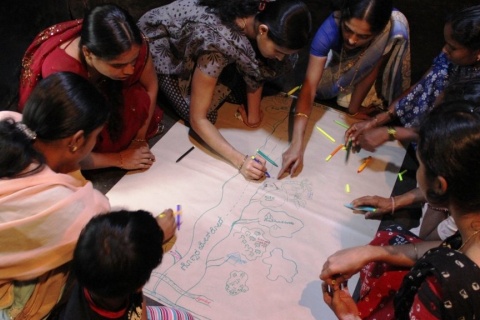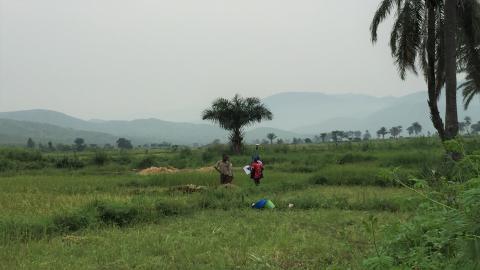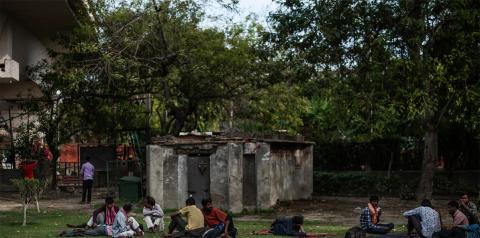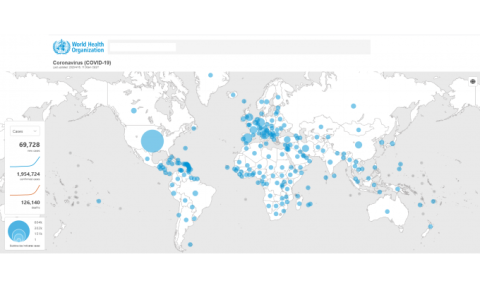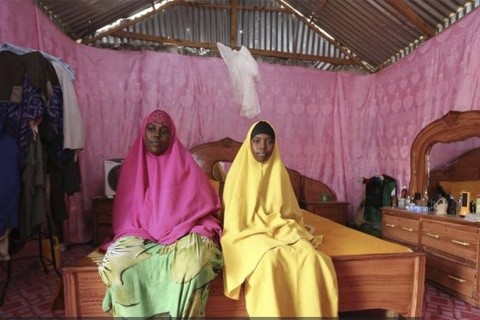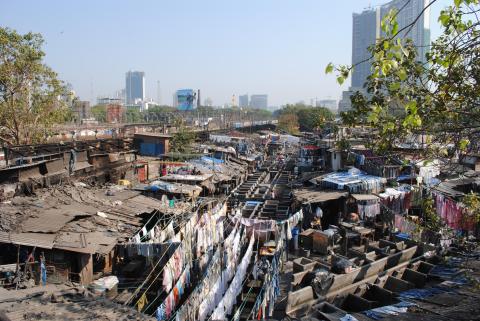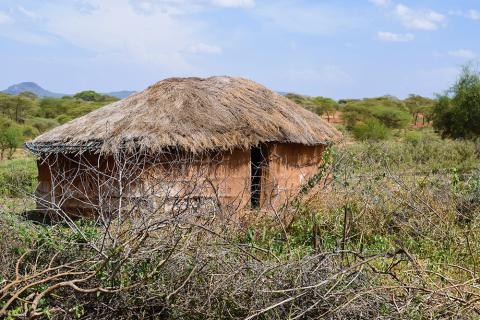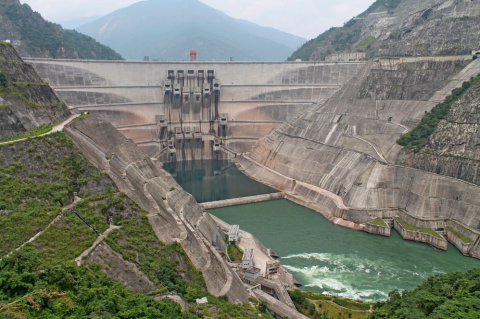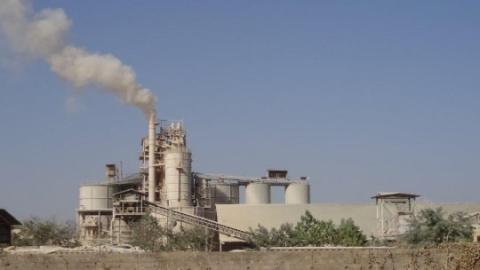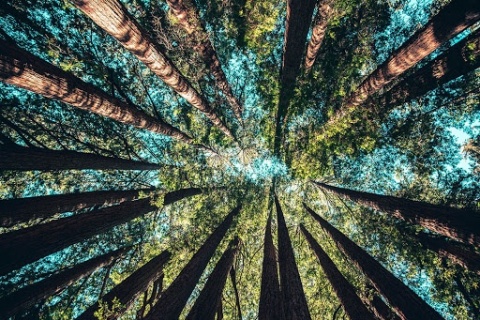Discover hidden stories and unheard voices on land governance issues from around the world. This is where the Land Portal community shares activities, experiences, challenges and successes.
 Follow our
Follow our
Sustainable Development Goals
Blog Series!
Interested in land corruption?
Follow our Land & Corruption Blog Series
for in-depth perspectives from the experts.
Issues
Geographical focus
The Government of India has announced an ambitious effort to map residential areas in villages using drone technology and provide “property cards” to these rural owners. In its first phase, the Svamitva (“Ownership”) scheme will map 100,000 villages in six states, with the scheme ultimately expanding to all of India’s 662,000 villages.
The ongoing pandemic and the formal and informal responses to its spread have very direct impacts on the food and nutrition security of people in all parts of the world. Strong concerns have been voiced that the global health crisis could turn into a global food crisis.
This blog recapitulates the interventions made by the panelists of a recently held GODAN Action webinar on “Empowering Women for Open Data Mapping in Agriculture: Implications for Land Rights and the SDGs in Africa”, Victor Sunday, Dr. Toyin Ojo, Nathalie Sidibe and Uchechi Shirley Anaduaka.
By Rohan Bennett, Eva-Maria Unger, Christiaan Lemmen, Kees de Zeeuw
By now, most readers are likely to have been impacted by the COVID-19 pandemic – perhaps directly through their own health or the health of those they know, or more indirectly through loss of work or income… and almost certainly through the changes in social norms and freedoms brought about by various lockdowns. This article explores the relevance of the land administration sector, disaster risk management and spatial information in the context of the coronavirus outbreak.
It’s time we break down the barriers to women’s access to land and protect women’s rights while the pandemic places them in a precarious situation
Not only is the coronavirus pandemic (COVID-19) having serious health impacts around the world, it also has the potential to significantly affect the housing, land, and property (HLP) of women and girls, particularly in low and middle-income countries.
Women at a disadvantage
Informal workers and desperate journeys
‘Corona lockdown’ led to one of the biggest migrations in India’s modern history. Hungry, thirsty and hapless- millions of migrant workers who form the backbone of our glittering megacities- took to the road, on desperate journeys home. These migrant workers are part of the informal economy- toiling away in construction sector and small factories, recycling waste or doing other precarious jobs. Many of them are landless or small/marginal farmers from rainfed farming areas, migrating seasonally.
Anna Letaiko is a middle-aged woman with a soft voice that carries wisdom and strength. Her husband is an older man, and together they live in small mud house in Mundarara – a remote village in Longido district in Tanzania, accessible only by a rough dirt road. It is a Maasai community similar to the one in which I grew up, except that the community’s livelihood is based on mining and pastoralism while my community still depends on farming and pastoralism.
I met Anna through my work with WOLTS – a five-year action research project on women’s land rights in pastoral communities that are affected by mining. As a speaker of the Maasai language, my job is to facilitate and translate in training sessions and help develop training materials.
In Maasai culture, it is very rare for women to own land. Men see themselves as owning land on behalf of the whole family. If women do apply for land, they usually apply in the name of their husband or son.
However, the law in Tanzania (Land Act, 1999, and Village Land Act, 1999) grants women and men the same rights to land access, ownership and control. The law also says that women have the same rights in decision-making over land. What Maasai customs mean in practice is that women are denied the right to apply for land and own it themselves.
During our research we heard that, when women in Mundarara applied for land in their own names, their applications were ignored, not taken seriously, and even thrown away. Some women were even asked for sex in exchange for land documents.
Our aim through the WOLTS project is to support the community to find their own solutions to land rights problems. To help them achieve this, we asked them to select community ‘champions’ who would be trained in land rights, mining laws, investment laws, mineral valuation and legal procedures for licence applications, as well as gender-based violence.
Anna was one of the first champions to be trained in Mundarara. When we first started working in the community, Anna did not even know that she had the right to own land. After the WOLTS training sessions, she put in an application, and it was taken seriously.
A few months later, Anna received a small plot near the village centre where she wants to build a modern house. As a trained champion for gender equity, she has promised to help other women by raising awareness and assisting them to become land owners like herself.
The growth of artisanal mining in Mundarara has brought many changes to the community, including giving families new sources of income. Women are finding that they have more opportunities to earn money and participate in community and family decision-making, including through land ownership.
Documenting and sharing Anna Letaiko’s story reminded me how quickly life is changing in pastoral districts due to factors like mining. I hope it will inspire readers, raise the voices of less fortunate groups, and improve everyday life in communities similar to my own.
This article was originally published through CSDS (Center for Social Development Studies) at Chulalongkorn University, Thailand. It can be found at: https://www.csds-chula.org/publications/2020/4/28/critical-nature-are-chinas-dams-on-the-mekong-causing-downstream-drought-the-importance-of-scientific-debate
By Grace Goodrich
In the second part of an exclusive with Africa Oil & Power, United Nations Conference on Trade and Development’s Director for Africa, Paul Akiwumi, discusses trade facilitation reforms, debt relief programs and Official Development Assistance as instruments of aid for Angola during COVID-19.
What role will trade facilitation and policy reforms play in helping reduce Angola’s dependence on fuel exports?
The fallout from COVID-19 has triggered narratives about profound changes to economic ordering. A closer look provides a more complex picture, particularly for countries in the global South.
As the world begins to reckon with the scale of COVID-19’s economic impacts, there is a growing sense that the pandemic will reconfigure the role of state and market for years to come.
Whether from the emergence of infectious diseases, the growing risks to global food systems, or from the increasing variability in global climate and local weather patterns, it is evident that we urgently need to rebalance our relationship with nature. Our relationship with forests is a prime example.
Forests are among the most biodiverse of Earth’s ecosystems. They sequester carbon and help to mitigate against climate change. They protect watersheds and help to control soil erosion. And yet, around 11% of carbon dioxide emissions come from deforestation and forest degradation, which is second only to the energy sector.
The 21st of March was the International Day of Forests, and it convened under the theme of forests and biodiversity. This is fitting in 2020, the beginning of a critical decade for the planet. There will be landmark moments early in the decade, including the anticipated adoption of a new post-2020 global biodiversity framework.
The United Nations Environment Programme World Conservation Monitoring Centre (UNEP-WCMC) is a Centre of global excellence in biodiversity. Over the past 10 years, we have been closely involved with REDD+, an initiative under the climate change convention (UNFCCC) that aims to support developing countries to reduce emissions from deforestation and forest degradation, and to promote the conservation, sustainable management and restoration of forests. Working closely with the UN-REDD Programme, we help countries to plan for and access results-based payments for these actions.
In work led by UNEP-WCMC, the UN-REDD Programme has supported over 20 developing countries to analyze where REDD+ actions could result in multiple benefits beyond carbon. Through spatial analyses carried out in close collaboration with national partners, countries have been empowered to identify areas that have potential for forest conservation, restoration and sustainable management, and can also help secure a range of additional important benefits for people and planet.
These analyses have shown how sustainable forest practices across the planet can contribute to a wide range of the Sustainable Development Goals.
One such example is Costa Rica. The National REDD+ Secretariat, together with FONAFIFO (the country’s National Forestry Financing Fund) and the UN-REDD Programme used spatial analyses to explore where REDD+ actions could help secure benefits beyond carbon, such as enhanced water regulation to support communities vulnerable to water stress, the potential for socio-economic improvements from forest-dependent livelihoods, and from ecotourism.
The work emphasized areas of overlap between the National REDD+ Strategy and spatial priorities for Costa Rica’s other objectives, such as national development, restoration and biodiversity conservation. Considering these benefits when planning and implementing REDD+ will help progress towards SDGs 1 (No Poverty); 6 (Clean Water and Sanitation); 13 (Climate Action); and 15 (Life on Land), among others.
More recently, this work also featured in the development of Costa Rica’s Gender Action Plan (contributing to SDG 5 on Gender Equality). Spatial layers showing the proportion of women by district contributed additional insight and helped to highlight districts where women could act as conservation agents, support efforts to reduce forest fires, and undertake reforestation activities.
Another example is Côte d’Ivoire, where we collaborated with the country’s REDD+ Permanent Executive Secretariat and the Swiss Scientific Research Centre to develop a forest restoration opportunities map. This combined potential benefits, such as carbon density, soil erosion risk and species richness, with obstacles to forest restoration, such as infrastructure development and high human land use. The resulting map shows areas with higher potential and lower obstacles, and thus where forest restoration could be most effective and have the most positive impacts. This could include contributing to SDGs such as SDG 6 (Clean Water and Sanitation), 13 (Climate Action), and 15 (Life on Land).
This type of analysis can identify where agroforestry actions are feasible to guide implementation of Côte d’Ivoire’s National REDD+ Strategy, promoting the use of agroforestry to strengthen agricultural systems’ resilience to climate change, and to diversify incomes for farmers. There is also an opportunity to align REDD+ and private sector cocoa initiatives, with the potential to create more incentives for smallholder farmers and contribute to SDG 12 (Responsible Consumption and Production), among others.
Meanwhile in Viet Nam, lessons from the National REDD+ Programme are informing the development of a deforestation-free jurisdiction in the Central Highlands. This region is at the forefront of efforts to conserve natural forests and other biodiversity, while sustaining production of high-value crops like coffee. Both nationally and locally, partners are seeking to promote sustainable land management and pilot a deforestation-free approach in the region in support of SDGs 13 (Climate Action) and 15 (Life on Land).
These individual examples give us just a snapshot of how retaining, restoring and sustainably managing our forests can help achieve a wide variety of SDGs and bring a range of benefits for people and for nature. As this year’s International Day of Forests slogan put it, our forests are too precious to lose.
More information is available here.

